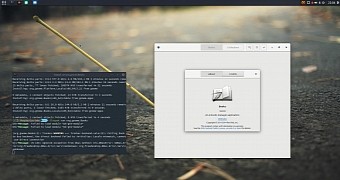In an unexpected turn of events, Ikey Doherty, the founder and lead developer of the Solus Project has just announced that he's adopting the well-known Flatpak application sandboxing and distribution framework for the Solus operating system.
Formerly XDG-App, Flatpak is an open-source initiative from Red Hat and Fedora Project to allow application developers to more easily distribute their apps across multiple GNU/Linux distributions. Once the Flatpak framework is correctly installed on an operating system, users will be able to install any third-party app with a single click.
Solus is an independently-developed operating system for desktops, using its own desktop manager called Budgie, which currently relies on the GNOME Stack. Solus has its own software repositories with up-to-date packages, but it also offers access to some closed-source software projects, such as Google Chrome through its in-house built package manager.
The collection of third-party apps offered there for Solus users is growing with each new major update of the operating system, but it would appear that the Solus Third Party system is far from robust, nor reliable. That's why Solus needs to implement a third-party tool to distribute this kind of apps that aren't available in the repos, and they are choosing Flatpak.
"You read that right. The best approach forward for Solus, for something as desirable yet minor as the Third Party selection, is to use a non-native application management system," said Ikey Doherty, Solus Project Founder and Lead Developer. "It’s a great solution, and in terms of the future, the most suitable route we can take."
Canonical's Snappy has lost the "fight"
OK, there was no fight, but only a simple poll posted on the project's Google+ page, where over 200 users were able to vote for Solus to adopt either Canonical's Snappy or Red Hat's Flatpak application sandboxing and distribution frameworks. Flatpak won with 65 percent of votes, and since it supports AppStream, it was the obvious choice.
By using a non-native application management system, Solus will offer users quicker and faster updates of some of the third-party apps that are currently available for installation via the Third-Party system in Software Center, Solus' graphical package manager, which will also be used for installation of Flatpaks.
To better understand the technical part of the implementation of Flatpak in Solus and why Flatpak is Solus Project's choice for offering users a better, more reliable distribution of third-party applications, we recommend reading the entire story on the official website, and don't forget to comment below if you want to offer your feedback regarding the integration of Flatpak into Solus.

 14 DAY TRIAL //
14 DAY TRIAL //